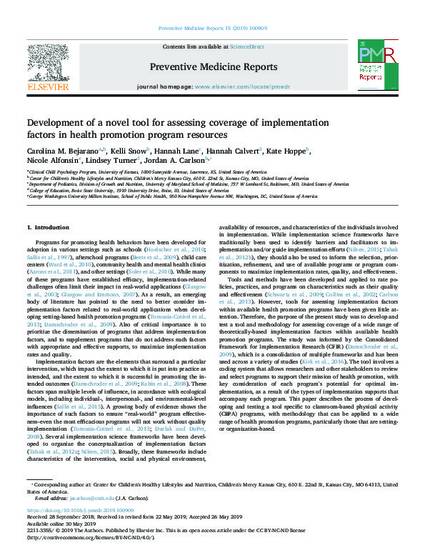
Programs for promoting health behaviors have been developed for adoption in various settings such as schools (Hoelscher et al., 2010; Sallis et al., 1997), afterschool programs (Beets et al., 2009), child care centers (Ward et al., 2010), community health and mental health clinics (Aarons et al., 2011), and other settings (Soler et al., 2010). While many of these programs have established efficacy, implementation-related challenges often limit their impact in real-world applications (Glasgow et al., 2003; Glasgow and Emmons, 2007). As a result, an emerging body of literature has pointed to the need to better consider implementation factors related to real-world applications when developing setting-based health promotion programs (Tomoaia-Cotisel et al., 2013; Damschroder et al., 2009). Also of critical importance is to prioritize the dissemination of programs that address implementation factors, and to supplement programs that do not address such factors with appropriate and effective supports, to maximize implementation rates and quality.

For complete list of authors, see article.